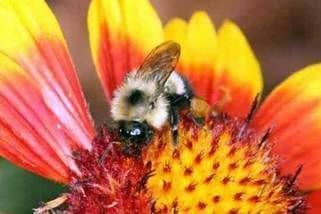
The ancient homeland of our bees is southern Asia. There still live three other species of the same genus Arga. They are closely related to each other, although they are at different stages in the development of the social way of life.
In search of previous stages of the development of the “language” of honey bees, one should make a trip to Ceylon.
There one could soon get acquainted with three cousins: an Indian bee, a giant bee and a dwarf bee. They differ from each other mainly by their size.
Indian bee
The Indian bee plays in this country the role of our honey bee. She is less plodding than ours. If the conditions of detention do not suit her – the area is poor with a bribe or a nest has been attacked by ants, – the whole family flies away, leaving all their buildings, and somewhere in the woods it organizes a new nest. This, of course, causes inconvenience to Indian beekeepers. Often they have to start out and in the woods in tall trees to find a replacement for fugitives. Otherwise, Indian bees in their way of life are very similar to honey bees. And the language of their dance, in fact, is the same.
Наващивание. Виды прополиса.
Breeds of bees